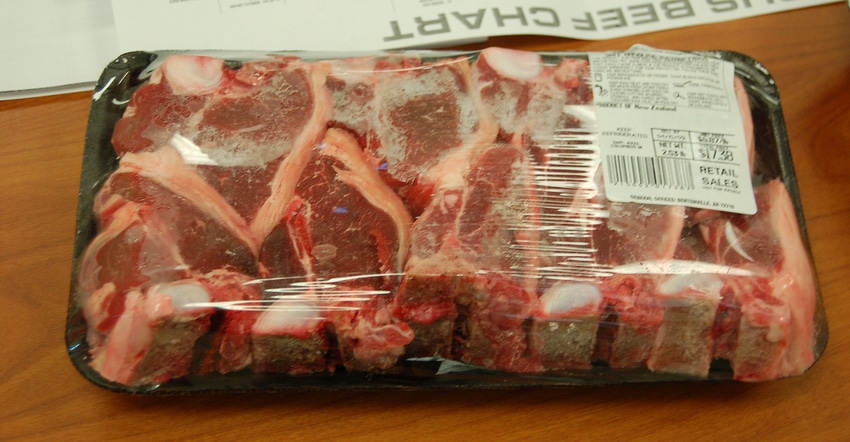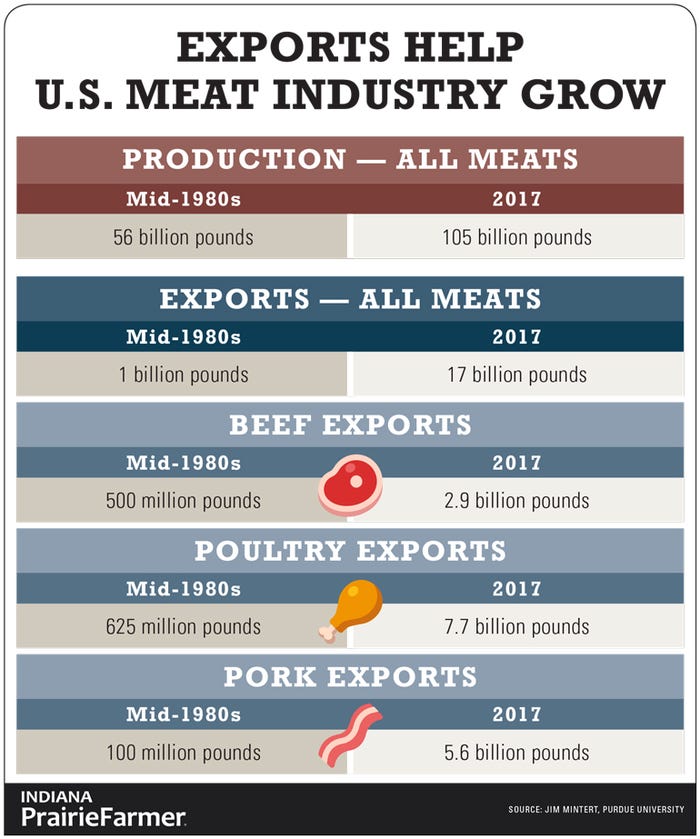April 9, 2018

By Jim Mintert
Growth in the trade of animal products has been quite dramatic since the mid-1980s. U.S. producers engaged in animal agriculture, as well as those engaged in grain and oilseed production, have benefited greatly.
U.S. crop producers have benefited because the increase in U.S. meat exports encouraged expansion of U.S. animal agriculture. That boosted demand for U.S.-produced feed/grains and oilseeds.
To see this more clearly, it’s helpful to examine how dramatic the shift has been in both U.S. meat production and exports. In the mid-1980s, U.S. meat production of beef, pork and poultry combined totaled just over 56 billion pounds per year. Meat exports to all destinations in the mid-1980s totaled about 1 billion pounds.
By 2017, U.S. meat production totaled 105 billion pounds, more than double its mid-1980s level. But meat exports skyrocketed, increasing 17-fold from the 1980s and exceeding 17 billion. That means meat exports, which averaged less than 2% of U.S. meat production in the mid-1980s, rose above 16% of U.S. meat production in 2017.
In a span of just over three decades, the U.S. went from exporting fewer than 2 pounds out of every hundred pounds of meat produced to exporting 16 pounds out of every hundred pounds of meat. It did so in a time frame when total meat production nearly doubled.
Exports by meat type
Pork, beef and poultry exports all have increased since the mid-1980s, but the rate of growth is not uniform across these three major meat production sectors.
Beef exports increased sixfold, reaching 2.9 billion pounds in 2017, compared to less than 500 million pounds in the 1980s. Poultry exports increased 12-fold, rising from an average of 625 million pounds in the 1980s to nearly 7.7 billion pounds in 2017. The most dramatic increase occurred in the pork sector. U.S. pork exports during the mid-’80s averaged just over 100 million pounds. By 2017, they totaled 5.6 billion pounds, a stunning 52-fold increase compared to 30 years earlier.

Exports have turned into an important source of demand for all major meat production sectors. During 2017, 11% of U.S. beef production was exported, up from less than 2% in the 1980s. The poultry sector exported 16% of production during 2017 vs. about 3% three decades ago. The pork sector, which exported less than 1% of production in the mid-1980s, exported 22% of U.S. production during 2017.
Future exports?
Future growth in U.S. meat exports will depend primarily on three things. First, income growth in importing countries is important. Second, competitiveness of the U.S. meat production sector will be a factor. Third, U.S. producers must have access to markets around the world.
Growth in meat exports over the last three decades has facilitated growth in U.S. animal agriculture. Future growth in the U.S. meat sector will be depend on continued growth in meat exports.
Mintert is a Purdue University agricultural economist and director of the Purdue Center for Commercial Agriculture. He writes from West Lafayette, Ind.
You May Also Like




